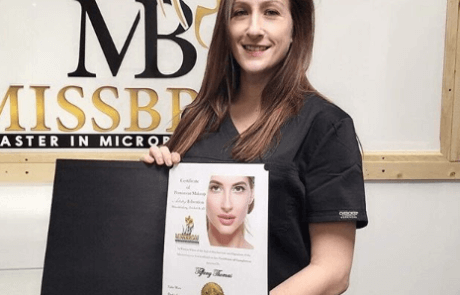8 Laser Tattoo Removal Facts
When you got that tatt, you could not keep it hidden because it looked amazing. However, now the image looks very different from what it was, and this makes it an unsightly mistake on your skin that you want to be removed. But before you rush for the tattoo removal, here are some factors about the procedure worth knowing.
1. Get ready for some pain
The removal process will involve the use of laser equipment, and you should expect to experience some discomfort. How painful the experience is somewhat subjective, depending on several factors. The first will be the location of the tatt. The pain can be high if the tattoo is in a tender or sensitive area of the body. However, it should feel like a simple snap of an elastic band on the skin or the scalding pain of hot oil from a frying pan. It is all a matter of your pain threshold. Nevertheless, it is advisable to consider some topical anesthesia such as numbing creams or taking injection or painkiller drugs for you never know how much of the pain you will be able to endure.
2. It’s done using a laser machine
The laser tattoo removal machine will look like a mechanism from hell once it starts working on your skin. The device emits a series of pulses in a narrow laser beam created in a single color and at a precise wavelength every nanosecond. The beam is a light energy that barrows into the skin and selectively absorbed by the ink particles of the tattoo shattering them into tinier particulates without damaging the surface. The ink particulates are so minute that they are absorbed into the body’s immune system and flushed away. You will have to undergo several sessions of this process for the tattoo to fade completely. In short, every session will have the laser machine will spit its fire targeting and shattering the pigment dermal layer to break down the ink.
3. You will wee out the ink
After undergoing the treatment, the broken ink is absorbed into the bloodstream and flashed out the system through the kidneys coming out through the urine. Do not expect the wee to be colored. The body will also flash out the ink via sweat, and this too will not have a strange color. Given this fact, you can comprehend and appreciate the hefty impact laser tatt removal will have on your kidneys and subsequently your health especially when you have many tatts removed at a time.
4. The process takes 6 – 10 sessions
In most cases, complete removal of an average-sized tattoo will require around 6 – 10 sessions within a time window of 4 weeks. The number of sessions may be higher or lesser depending on the several factors such as the size and density of the tattoo and the type of skin. Remember that the process works on one tatt at a time meaning 6 – 10 session par tattoo to allow for proper defragmentation of the ink pigments into fine particulates. At times, the dermatologist working on the tattoos may opt for a quicker approach that involves working on a tatt three times in each session at intervals of 20 seconds. The pain may make a session feel like an eternity, but the process is surprisingly quick and lasting around 1 – 10 minutes.
5. Laser tattoo removal can be expensive
Given the number of sessions needs to remove a single tattoo, it is easy to note how costly tatt removal can be, more so if there are several tatts to remove. Luckily, people that develop severe psychological trauma or allergic reactions can be eligible for the tattoo removal done on the NHS. However, this is something that many taxpayers are not particularly happy about. For the other seeking to have their tattoos removed due to other reasons will have to dig deep into their pockets. The overall costs of having a tattoo removal treatment, accounting for the 6 – 10 sessions required per tatt, can be anywhere from $350 to $800.
6. The healing process takes around two weeks
The result after undergoing the producer will make you treated are of the skin look like something out of the “Zombie Invasion” of the “Walking Dead.” Redness, inflammations, darkening patches, pinpoint bleeding, and pus-filled blisters are some of the this you can expect. However, much of these will subside within a week or two after the removal treatment. You should see the doctor if these issues persist for more than a fortnight.
7. Essential aftercare practices
The dermatologist places an ice pack on the treated areas after the procedure to manage the swelling and then applies an antibiotic ointment or lotion before covering it with a plaster or bandage. For home care, the doctor will recommend taking the necessary steps to protect the treat areas with antibacterial ointment or cream and the use of an SPF. Picking at it or scratching, it will only make things worse.
8. The associated risks
Laser tatt removal has gain popularity thanks to advancements in science and things are getting better, faster, and safer with limited risks involved. Nevertheless, some of the reported issues that may go wrong with the treatment include:
• Side effects may fail to subside after two weeks.
• There is a risk of infection.
• The treatment may not give desired results (complete fade or removal of the tatt). It may leave a “ghost” of the unwanted tattoo.
• Permanent scarring may occur.
• The procedure may cause hypopigmentation (cause the treated area to be paler than the rest of the skin).













